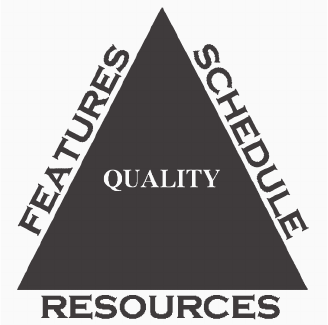
PRODUCTION
T
ECHNIQUES
In This Chapter
• Getting a Project Back on Track
• Project Reviews
• Running Meetings
• Weekly Status Reports
• Preventing Feature Creep
• Preparing for Milestones
• Establishing Approval Processes
• Task Forces
18.1 I
NTRODUCTION
A
s a producer, it is your responsibility to navigate through the various
development phases and successfully run a project from concept to com -
pletion. This is a big, but not impossible, challenge, especially if you are
constantly monitoring the development process to ensure that the game’s goals
are being met and if you are actively looking for ways to improve the quality and
efficiency of the production process. Many production techniques can be used
to get a project back on track, monitor progress, and improve efficiency. This
chapter discusses a few techniques that are simple, but effective to implement.
Chapter 18Chapter 18

306 THE GAME PRODUCTION HANDBOOK, 2/E
18.2 GETTING A PROJECT BACK ON TRACK
In order to fully understand how the project variables of schedule, resources,
features, and quality fit together and directly impact each other, it is useful to
envision a triangle. Figure 18.1 is a diagram of this.
The sides of the triangle correspond to the resources, the schedule, or the
features that are necessary to complete any given project. The area inside the
triangle represents the quality of project. If one of these factors changes, it will
affect the other factors; one measurement of a triangle cannot change without
affecting the others. If all four of these factors are constantly changing during
the development cycle, the project will never be stable. This makes it hard to
estimate when the game will be completed, how much it will cost, how many
features it has, and the quality of the final version.
For example, if the schedule is shortened, either more people are added,
features are cut, the quality of the product is lessened, or any combination of
these is necessary to get the project completed on time. If head count is re-
duced, either more time is added, features are cut, or the quality is lessened to
DEALING WITH SCHEDULE SLIPPAGE
Stuart Roch, Executive Producer
Activision
The truth is that it’s tough to tell when a project starts getting off track. As
Frederick P. Brooks Jr. says in his book, The Mythical Man Month, “How does a
project get to be a year late? One day at a time.” Minor schedule slippage is tough
to identify, and it only becomes easier to spot when the damage has already been
done. The best way to deal with schedule slippage is to have a good defense for it
from the start.
A clear and concise schedule is a must as are monthly milestones with razor-
sharp definitions. Even the best schedule isn’t worth the paper it’s printed on if the
production team doesn’t follow up on the team’s progress aggressively on a regular
basis. Only by realistic analysis of the team’s progress can the producers identify the
minor slippage and make minor course corrections after the monthly milestones as
appropriate.
Waiting until the slippage is obvious makes it easier to identify the problem and
means the team will deal with the problem more aggressively, but by this point, the
damage has already been done.

PRODUCTION TECHNIQUES 307
compensate for the reduced resources. Jim Lewis explains concepts like these
more in-depth in his book, Project Planning Scheduling and Control.
Striking a balance among the schedule, resources, features, and quality is a
challenge for any project. However, when faced with a project that is getting off
track, there are four fundamental areas to examine for ways to get the project
successfully running again:
Increasing scheduled time: More time is something that teams always
request on a project. However, time is not a luxury if the game has to be fin-
ished in time for the holidays. Adding time to the schedule might seem like
an easy solution, but make sure that any time added to the schedule is used
effectively. If more time is added and the team slows down their working
pace, the extra time will be used up quickly.
Increasing resources: Adding resources can also be a straightforward way
to bring a project back in line with the plan, but it is possible to reach a criti-
cal mass where adding more resources will actually increase the time to get
the tasks completed. When more people are added to a project, you have
to account for training time, defining their tasks, setting up their hardware
and software, tracking their work, and so on. These items will also take time
away from people already working on the project, especially if they are re-
sponsible for training.
Cutting features: Nobody ever wants to cut features, because it is per-
ceived as diminishing the value of the game. However, examine the feature
set to determine which core features must be preserved that give the game
value and focus on cutting the extra features that could be used in a second
FIGURE 18.1 Relationship of project variables to each other.

308 THE GAME PRODUCTION HANDBOOK, 2/E
version of the game. Also, focus on eliminating extra features that will have a
positive impact on the most pressing resource and schedule constraints.
Reducing quality: If the people in charge insist that the full feature set must
be implemented with the current staff and schedule, then the quality of the
project will diminish. If you are put in this position, define specifically where
the quality will suffer and explain why to the powers that be. Sometimes, this
will convince them that adding more time, money, or resources is important
to ensure the game’s quality.
If a project is extremely off base—it is way off schedule, or it is costing too
much—it may be cancelled, especially if there is no hope of realizing a profit
from its eventual release, or there is an opportunity to utilize the time and re-
sources on another project that is more likely to be profitable. Canceling a proj-
ect is never a pleasant task and is not something that is taken lightly by senior
management. Canceling projects means potential layoffs, loss of money and time
spent, and is a huge blow to employee morale.
However, this decision can be healthier in the long run, since the developer can
focus efforts on improving the quality of another game in production or start work-
ing on a new game and use the lessons learned from the previous project. If you are
in a position where canceling the project is being seriously considered, make sure
that you understand the pros and cons of all the other proposed solutions to ensure
that cutting the project is indeed the best thing to do for all concerned.
HOW TO GET A PROJECT BACK ON TRACK
Tobi Saulnier, President
1st Playable
When a project is in trouble, communication is often one of the first things to
go! People are stressed and tired, which in addition to impacting communication,
also makes it difficult for them to step back and look at what is happening on the
project as a whole.
One technique you can use to get a project back on track is to simply create a
list of how much work remains to be implemented. When a team is in trouble, they
often stop tracking how much is left to do and, therefore, have only a conceptual
idea, not a concrete list, of what work needs to be completed. Work with the team
to put this list together and make sure that everyone agrees that it is complete. Must
have items are differentiated from wish list items, and high-risk or problem areas

PRODUCTION TECHNIQUES 309
18.3 PROJECT REVIEWS
Regular and comprehensive project reviews with management are vital in moni-
toring the game’s development progress. The review requires you to look at the
established development plan and compare that with the game’s actual develop-
ment progress. Further, the review presents an opportunity to identify problems
and formulate solutions for them, because potential red flags are exposed and
can be neutralized before they become problems.
Before starting a review, make sure that everyone is prepared and focused on
the goal. Reviews can be ineffective and a waste of time for the following reasons:
■
Unclear objectives/no focus
■
Lack of preparation
■
Wrong people involved
■
No follow-up
are noted. This helps create a shared understanding of the scope or implementation
problems at hand, which is necessary for any effective problem solving.
After the list is completed, the team needs to shift process to only work on
what’s on the list. If a task is forgotten (which is common at this stage), add it to the
list to be worked on. This way everyone is working on the same plan.
Meanwhile, you can take the tasks remaining and start to prioritize and plan the
work, with the goal of estimating the time and resources needed to complete the
game. If a game is late, you can see where adding more resources will help and iden-
tify areas where the work can be scoped back. The list also helps the team to identify
situations in which team members might think a task is done, but it still needs work
to complete, and so on. In addition, the list provides a way to double-check the
specifications of the work that is already in progress and a way to track actual time
versus estimated time, so that the estimates can be updated accordingly. This can be
an effective and visible tool, since you can post the list in team rooms and cross off
items when they are completed.
The most important thing this technique does is to get the team working to-
gether on a plan that they believe they can accomplish. It also helps get management,
the team, and the customer on the same page. You might think a project is in trouble,
but the team thinks things are fine; you might think a feature requested by the cus-
tomer can be added, but the team feels they’re already overcommitted. The nice
thing about putting together a list of remaining tasks is that when everyone is looking
at the same data, 99 percent of the time you will come to the same conclusions.
..................Content has been hidden....................
You can't read the all page of ebook, please click here login for view all page.
